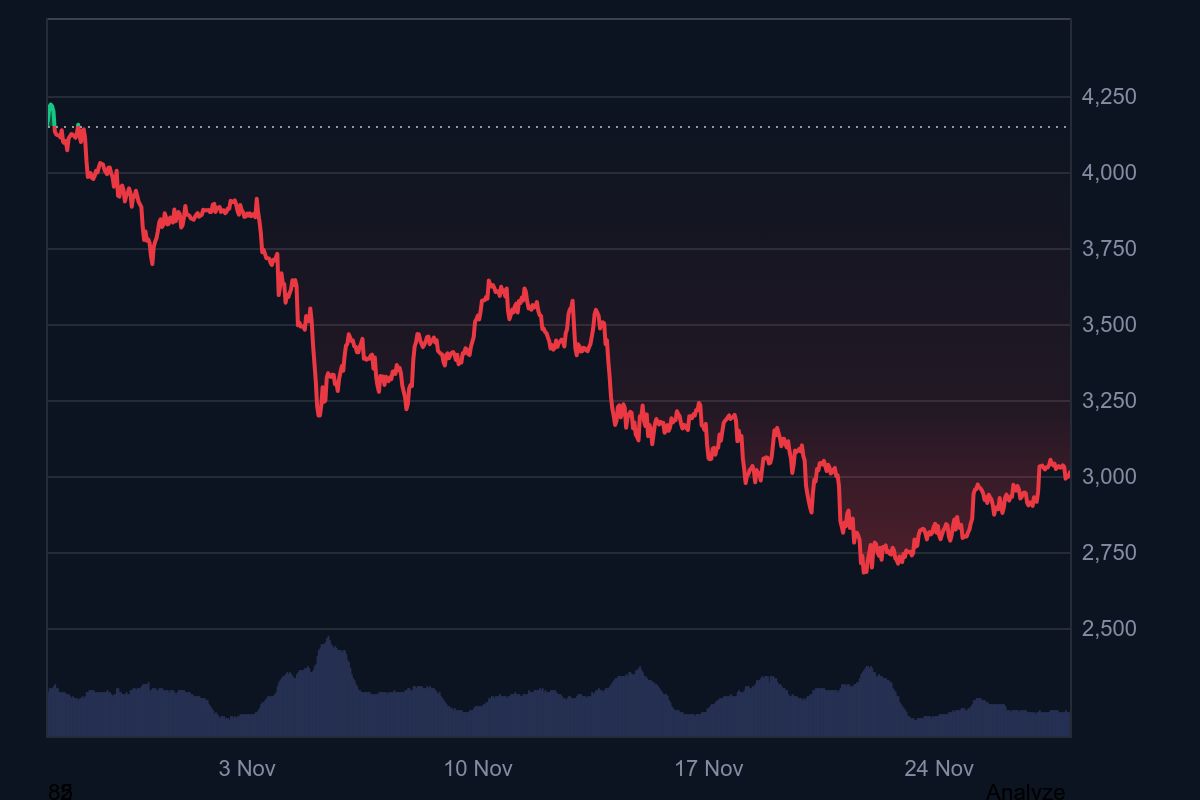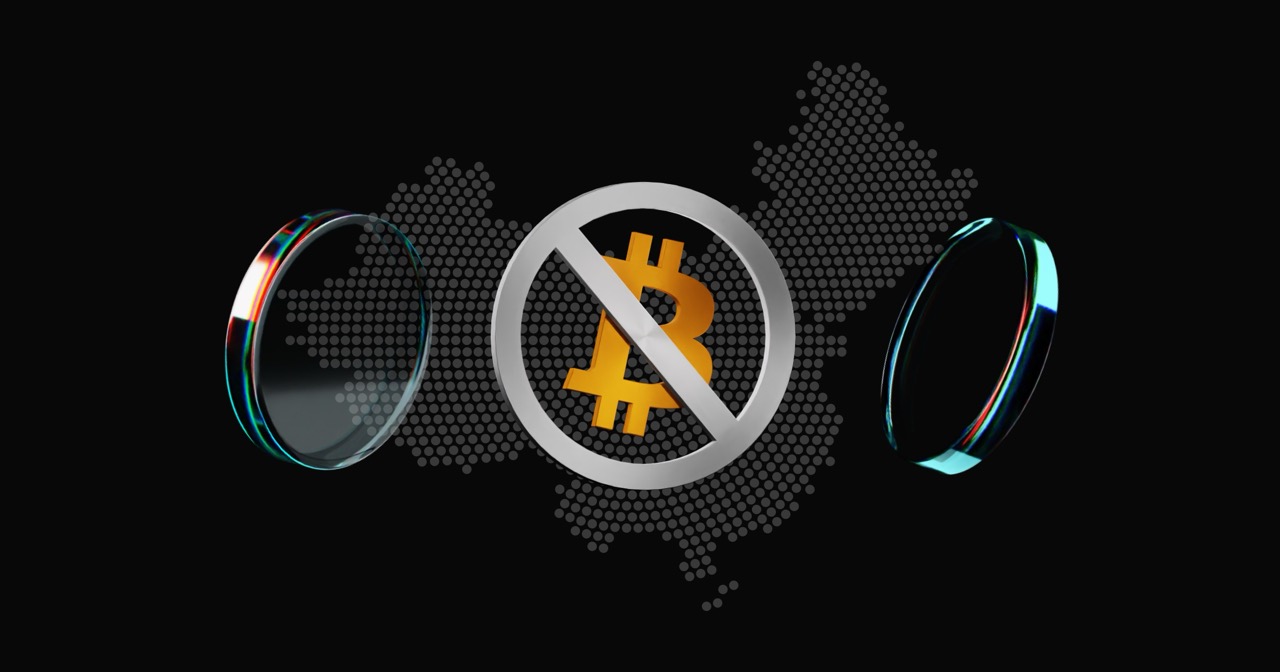Ethereum Surges Past $3,000 — Can the Fusaka Upgrade Push ETH Price Higher?
Ethereum (ETH) has reclaimed the $3,000 level, signaling a return of bullish momentum as crypto markets strengthen toward the end of 2025. The move comes amid a broader rebound led by Bitcoin, alongside a shift in macroeconomic sentiment and renewed interest from institutional investors. Spot Ethereum ETFs have begun to see meaningful inflows again, with BlackRock’s fund alone adding more than 31,000 ETH in a single session. Expectations for a more accommodative Federal Reserve have also improved the risk environment, helping push ETH toward the $3,050 range and restoring confidence among traders who have been waiting for a decisive move.
The rally has arrived just ahead of Ethereum’s next major milestone, the Fusaka upgrade, which is scheduled to go live in early December. Fusaka is widely viewed as one of Ethereum’s most significant technical advancements since the network transitioned to proof-of-stake. It introduces improvements designed to increase data capacity, enhance Layer-2 performance and strengthen the network’s overall efficiency. While the surge past $3,000 reflects broader market forces, anticipation surrounding Fusaka has added an extra layer of optimism. Market participants are now watching closely to see whether the upgrade can provide the momentum needed to sustain ETH’s recovery and potentially push the price to new highs as the year draws to a close.
Ethereum Crosses $3,000 Supported by ETF Inflows and BTC Gains

Ethereum (ETH) Price
Source: CoinMarketCap
Ethereum climbed back above $3,000 on November 27, 2025, rebounding alongside a broader resurgence in the crypto market. Bitcoin led the charge with a sharp move above $90,000 after weeks of uneven trading, igniting renewed interest across major altcoins. ETH had been struggling to regain momentum throughout mid-November, trading as low as the $2,700 range, but Bitcoin’s rally helped reverse sentiment and pull the market back into risk-on mode.
The surge was further supported by a noticeable return of institutional demand. Spot Ethereum ETFs recorded more than 35,000 ETH in combined net inflows during a single session, their strongest daily gain in weeks. BlackRock’s ETH fund dominated the activity, absorbing over 31,000 ETH on its own. This renewed engagement suggests that large investors, who had stepped aside during earlier volatility, are beginning to rotate capital back into Ethereum ahead of key catalysts. Strong ETF inflows have historically acted as a reliable indicator of improving long-term sentiment, and this week’s data helped reinforce that trend.
Macro conditions added another tailwind to the move. Traders are increasingly pricing in the likelihood of an upcoming Federal Reserve rate cut, which has boosted appetite for risk assets across the board. Equities, commodities and crypto all reacted positively to shifting expectations, creating a more favorable environment for capital to flow back into digital assets. With Bitcoin gaining strength, ETF inflows returning and macro sentiment improving, Ethereum finally broke through the $3,000 barrier with conviction, setting the stage for heightened anticipation around the network’s upcoming Fusaka upgrade.
What to Expect From Ethereum’s Fusaka Upgrade
Ethereum’s Fusaka upgrade, scheduled for December 3, 2025, is poised to deliver one of the network’s most important scalability advancements since the move to proof-of-stake. The upgrade focuses on boosting data throughput, improving Layer-2 performance and reducing the hardware demands on node operators. Together, these enhancements are expected to strengthen Ethereum’s long-term capacity while keeping the network decentralized and efficient.
Key features expected in Fusaka:
-
PeerDAS data sampling: Enables nodes to verify blob data through small samples instead of downloading everything, allowing Ethereum to scale from 12 blobs toward a future target of up to 50 per block, significantly increasing rollup throughput.
-
Higher block gas limit: Raises the limit from about 45 million to roughly 150 million gas units, giving each block more computational room and supporting higher on-chain activity.
-
Verkle trees: Introduces a more efficient state storage structure that reduces proof sizes and improves verification speeds, making light clients more practical.
Blob fee reserve price: Establishes a minimum blob fee to prevent prices from dropping to near zero, helping stabilize validator revenue and ETH burn dynamics. -
Additional optimizations: Includes EVM refinements, security upgrades and improved support for commonly used cryptographic standards.
How Fusaka Upgrade Could Impact ETH Price
The Fusaka upgrade has added momentum to Ethereum’s recovery above $3,000, raising expectations that improved scalability could strengthen the network’s long-term value. In the short term, the price reaction may remain driven by broader market sentiment and ETF inflows rather than immediate technical changes. Some traders also note the possibility of a brief “sell-the-news” pullback once the upgrade goes live on December 3, a pattern seen in past Ethereum milestones.
Over time, Fusaka’s enhancements could help build a more supportive price environment by boosting Layer-2 throughput, increasing data capacity and improving network efficiency. If activity rises and fees pick up as a result, ETH’s burn rate and staking incentives may strengthen, creating more favorable fundamentals. A smooth rollout would also reinforce confidence in Ethereum’s development roadmap, which could attract renewed interest from long-term investors.
Analysts Weigh Bullish vs. Bearish Factors
Analysts are offering mixed outlooks on Ethereum’s prospects following the Fusaka upgrade, with many noting that ETH’s recent move above $3,000 reflects a healthier market backdrop but not necessarily a guaranteed continuation of momentum. The upgrade is widely viewed as a positive step for Ethereum’s long-term scalability, yet traders emphasize that near-term price action will still be influenced by broader market forces, including Bitcoin’s trajectory and expectations of a Federal Reserve rate cut.
On the bullish side, rising institutional inflows and stronger macro sentiment are improving Ethereum’s positioning. Fusaka’s upgrades to data capacity and Layer-2 throughput could help drive higher network usage over time, which may translate into increased fee burn and stronger staking incentives. A smooth rollout on December 3 would also reinforce confidence in Ethereum’s development roadmap and could encourage more capital to rotate into ETH as investors look ahead to 2026.
However, some analysts remain cautious. Ethereum has faced declining fee revenues in recent months, which have weighed on staking yields and tempered enthusiasm among long-term holders. Competing Layer-1 networks continue to gain traction with faster and cheaper transaction environments, raising questions about how quickly Fusaka’s benefits will materialize. There is also the possibility of a “sell-the-news” reaction after the upgrade, especially if immediate performance improvements are less visible than expected. These opposing forces leave ETH at a pivotal point as the market waits to see how the upgrade will shape its next major move.
The Road Ahead
Ethereum’s return above the $3,000 level and the anticipation surrounding the December 3 Fusaka upgrade have set the stage for a potentially pivotal end to 2025. The network’s technical direction appears strong, with Fusaka expected to deliver meaningful improvements in scalability, efficiency and developer experience. A smooth deployment would reinforce Ethereum’s reputation for executing complex upgrades reliably, a factor that often supports long-term investor confidence. Market participants will be watching closely in the days following the activation to see whether transaction activity, Layer-2 performance and fee metrics begin to reflect the upgrade’s intended impact.
Still, ETH’s ability to build on its recent momentum will depend heavily on conditions beyond the upgrade itself. Bitcoin’s performance, macroeconomic developments and institutional risk appetite remain critical drivers of market direction. Traders will also be looking for signs that Ethereum’s ecosystem can convert new technical capacity into real usage, especially as competition from alternative Layer-1 networks continues to grow. With sentiment improving and a major upgrade on the horizon, Ethereum enters December with renewed optimism, but its path forward will
Conclusion
Ethereum’s move back above $3,000 has brought renewed optimism to the market, but the coming weeks will determine whether this momentum can hold. The Fusaka upgrade on December 3 is expected to deliver meaningful gains in scalability and network efficiency, reinforcing Ethereum’s long-term vision and strengthening its position within the broader ecosystem. While the upgrade itself may not trigger an immediate price reaction, it lays important groundwork for increased activity and sustained growth across Layer-2 networks.
ETH’s trajectory from here will depend on how quickly Fusaka’s improvements translate into real usage and whether rising on-chain demand can support stronger fee dynamics and more attractive staking yields. Broader macro conditions and Bitcoin’s performance will continue to guide sentiment, but Ethereum enters December with renewed attention and a clear path forward. Fusaka marks a significant milestone in the network’s evolution and the coming months will show how effectively these changes can shape ETH’s standing as 2026 approaches.
Disclaimer: The opinions expressed in this article are for informational purposes only. This article does not constitute an endorsement of any of the products and services discussed or investment, financial, or trading advice. Qualified professionals should be consulted prior to making financial decisions.



